Garnet Quality Factors
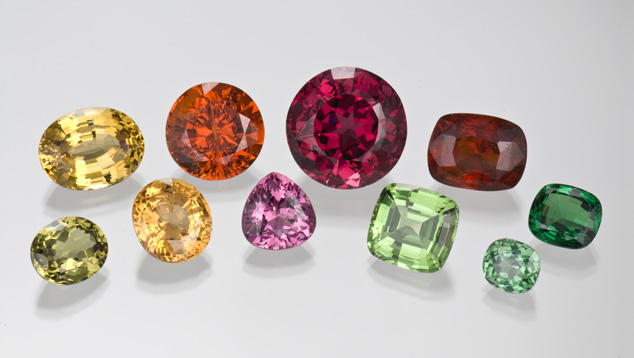
At first, the sheer number of garnet varieties can seem bewildering. It helps to think of the different types of garnets in terms of color.
Color
Pyrope and almandine range in color from purple to orangy red. Spessartine is found in a variety of orange colors, while andradite comes in yellow and yellowish green. Grossular has perhaps the widest color range of any garnet species, from colorless through yellow to reddish orange and orangy red, to a strong, vibrant green.
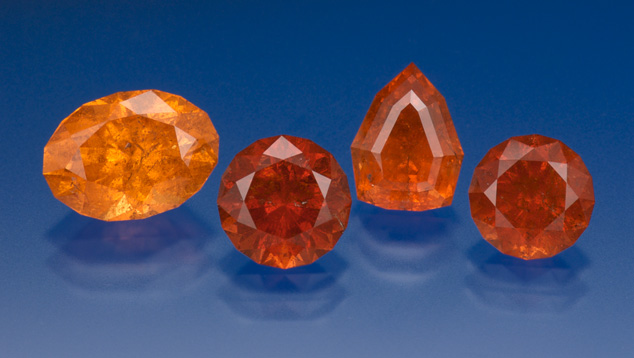
These vibrant spessartine garnets are from the US state of Virginia, another important historical source for collectors. - Gift of John Bradshaw
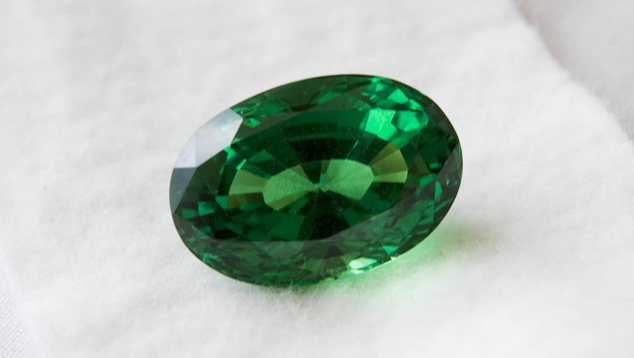
This tsavorite garnet has an appealing green color and is a 68.82-carat gem. - Courtesy New Era Gems
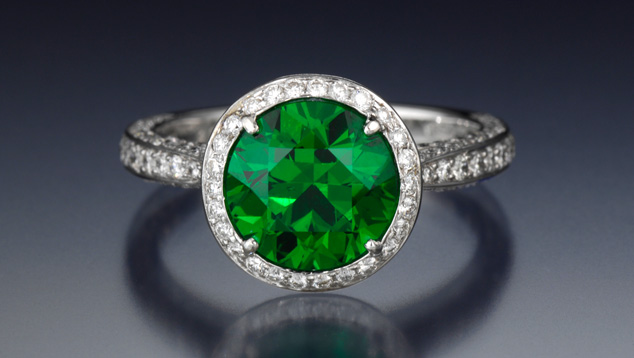
This 3.20-carat demantoid garnet’s vivid green hue is exceptionally beautiful. In fact, it’s close to the top color for this variety. The gem is mounted in a platinum ring with diamond accents. - Courtesy A Touch of Color
Gemologists and colored stone dealers further subdivide some garnet species into varieties depending on color. For example, demantoid is a brilliant green variety of andradite that’s highly prized by collectors. Both tsavorite and hessonite are varieties of grossular. Tsavorites are green, while hessonite ranges from orange and orangy red to brownish red. Rhodolite is a purplish red variety.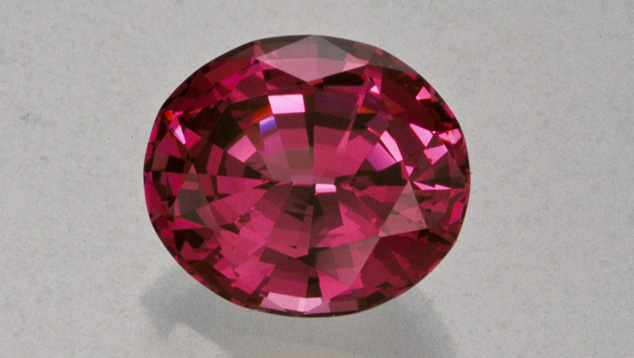
Rhodolite is the purplish variety of pyrope-almandine garnet. It can be spectacular, like this 8.72-carat gem.
ClarityTypical garnet clarity depends on garnet type. For example, the red garnets almandine, pyrope, and rhodolite typically do not have eye-visible inclusions. Some of the orange garnets, like spessartine and hessonite, often have eye-visible inclusions.
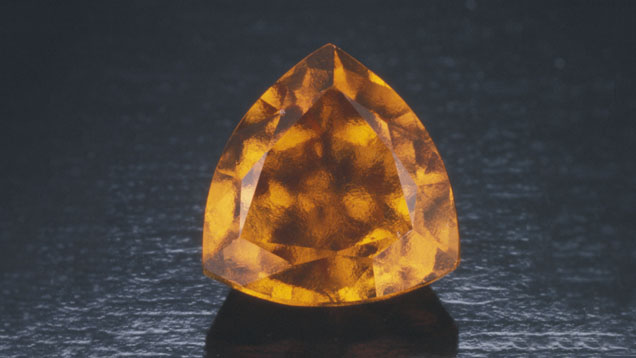
Hessonite garnet often has a turbulent inner appearance called the roiled affect. - © GIA & Tino Hammid, courtesy Gordon Bleck
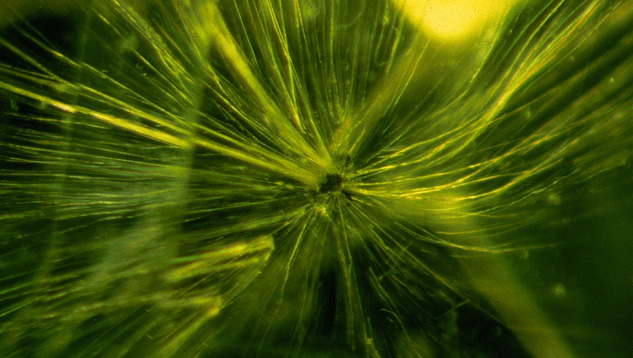
Demantoid might have eye-visible inclusions called horsetails that can raise its value.
Grossular is typically translucent, making it popular for cabochons, beads, and carvings.Cut
Many garnets are cut into standard shapes and standard sizes to allow easy setting into jewelry. This is especially true of many red garnets. Expensive garnets like fine-quality tsavorite are cut into shapes and cutting styles that allow more of the weight to be retained from the rough.
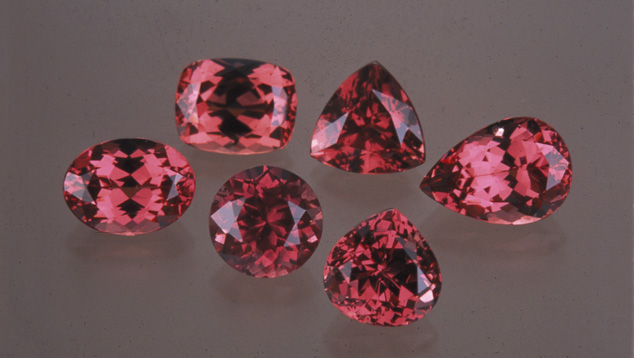
Garnets come in a variety of shapes and cutting styles.
Demantoid is often cut to exact proportions that allow the best possible display of its fire. Garnets are also popular for designer cuts and carvings. Red garnets are classic materials for cutting into cabochons and beads. They are commonly found to have high clarity and to be very transparent.Carat Weight
Garnets can be found in all sizes and weights. Some garnets, like demantoid and tsavorite, are more commonly found in small sizes, so their value goes up significantly with size. Other garnets, like almandine, are far more common in larger sizes so there’s no dramatic rise in value as size increases.



